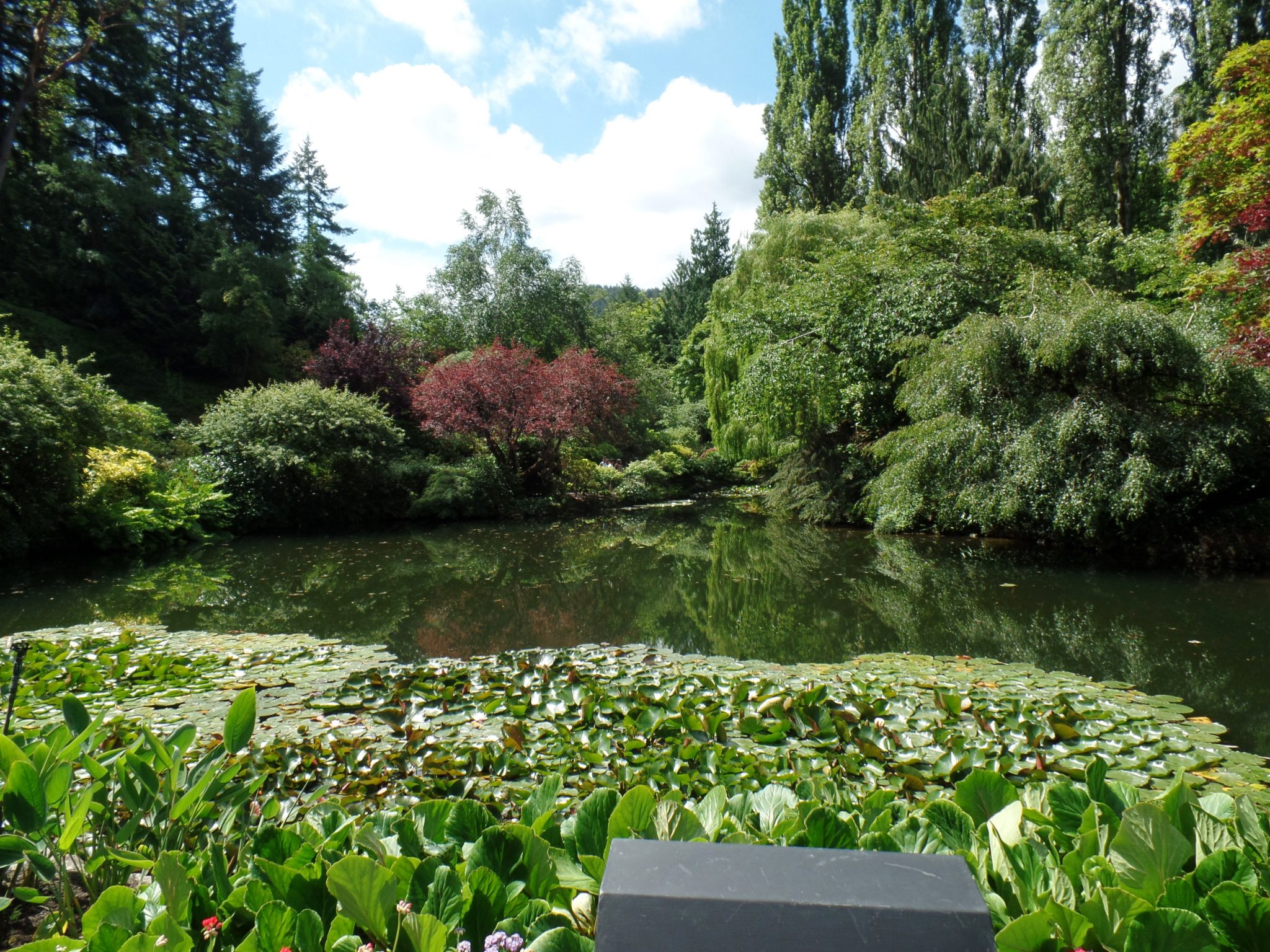 When I moved to Seattle, one of the first things everyone said to me was, “Oh, you’ll be so close to Victoria, you can see Butchart Gardens.” But Seattle has plenty of distractions, and I seldom had the time to head up to Canada. When I had the time, I didn’t have the money. Then when I had time and money it was winter. Before I knew it I had lived in the Pacific Northwest for 20 years and never been to Victoria. When I finally corrected that situation in June, Butchart Gardens was my first priority.
When I moved to Seattle, one of the first things everyone said to me was, “Oh, you’ll be so close to Victoria, you can see Butchart Gardens.” But Seattle has plenty of distractions, and I seldom had the time to head up to Canada. When I had the time, I didn’t have the money. Then when I had time and money it was winter. Before I knew it I had lived in the Pacific Northwest for 20 years and never been to Victoria. When I finally corrected that situation in June, Butchart Gardens was my first priority.
Getting There
Instead of paying $30 each to take the tourist bus directly from downtown to the gardens, we used our $5 all-day city bus pass (kids ride free). It took about 15 minutes longer to get there, but we got to see more of the island and talked to locals on the way. The public bus in Victoria is the best deal in town, and puts public transportation in the US to shame.
If we had realized that the bus stopped at the Butterfly Gardens, we would have gotten off there and then caught the next bus the rest of the way, but by the time we realized that was an option, we had missed our chance. It was probably for the best. All the tourist literature says to plan for 1.5-2 hours at Butchart Gardens, but we stayed for over four hours, and the kids were wiped out by the end.
Getting In
Entry to the gardens was expensive, but not outrageous (about $60 for four people of various discount eligibilities). Inside we were met by a large plaza with a gift shop and cafe, and a path leading to the gardens proper. This first path provided evidence of Butchart Gardens’ traditional approach to planting, with large beds of annuals that few gardens can afford to maintain these days. We passed a large arbor filled with hanging baskets of fuchsias, and oohed and aahed appropriately. But this was nothing compared to what lay ahead.
Sunken Garden
Jennie Butchart reclaimed the giant pit left from her family’s gravel mining business to build the first of the major gardens on the grounds, the Sunken Garden. After passing under a log arch, you find yourself standing on a viewpoint at the top of a path that winds down into the Sunken Garden. It’s a breathtaking view, worthy of a Chinese scroll painting, and visitors bunch up at the top, blocking access to the path in their efforts to capture the view on their various devices.
Confession: I have a Master’s degree in Horticulture, but I can’t identify plants to save my life. I have several excuses for this, but the point is that I always have to check the plant tags at public gardens just like everyone else.
Plant Selection
Nevertheless, once in the garden, I was struck by the plant selections. In order to preserve the feeling of a residential pleasure garden, Butchart Gardens does not label its plants. But I didn’t need plant labels. Pieris japonica, red-leaf cherry trees, geraniums, cherry laurel – these were hardware store plants, the same plants that comprise sickly apartment building foundation plantings all over Seattle. There was even a lot of English ivy, the bane of Northwest gardeners. There were very few flashy exotics, nothing representing the latest rare varieties and sparkling garden show trends. The only thing differentiating the beds at Butchart Gardens from sad apartment foundations was good design and impeccable maintenance. And Butchart has those in spades.
As always when I visit public gardens, I was inspired to go home and create great things. But this time, instead of wondering how I would pay for my latest botanical discovery, my ideas did not involve raiding the nearest nursery. This time I was thinking about how to prune a plant at home that I always hated, how I could move things around to complement each other better, and how I could fill in dead spots to alter the sense of space in my yard.
Theme Gardens
From the sunken garden we continued to the carousel and bought ice cream to keep the kids engaged. It reminded me of stories about how working class people used to make a day of visiting Central Park during the Industrial Revolution. I updated the experience by filling my phone’s memory with photographs of roses in the traditional Rose Garden. The abundance of the Rose Garden might have been overwhelming if the crowds hadn’t been.
Fortunately, after the hot sun and teeming masses of the Rose Garden we found the calm of the Japanese Garden. Butchart’s Japanese Garden is more lushly planted than the spare landscapes that inspired it. The plants used are often proxies for more authentic, traditional choices. But the desired effect was accomplished. Despite the crowds, the garden remained an oasis of calm. Every step presented a new still life worthy of contemplation. The differences from true Japanese gardens did not feel like a failure to grasp the principles of Japanese design. Rather, the garden’s design honored them by acknowledging the specifics of a climate quite different from Japan’s. Butchart Gardens mastered the most frequently ignored principle of Japanese gardening – respect for the spirit of place.
After 20 years, I had finally seen the famous Butchart Gardens. They lived up to the hype.







About the author